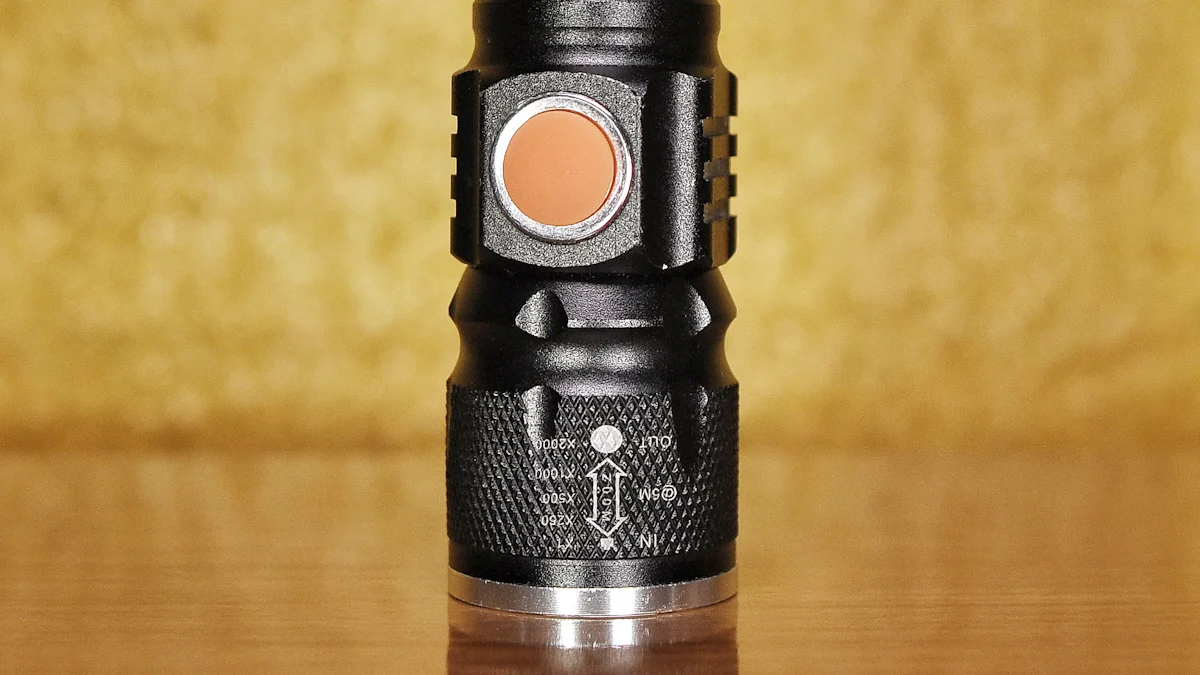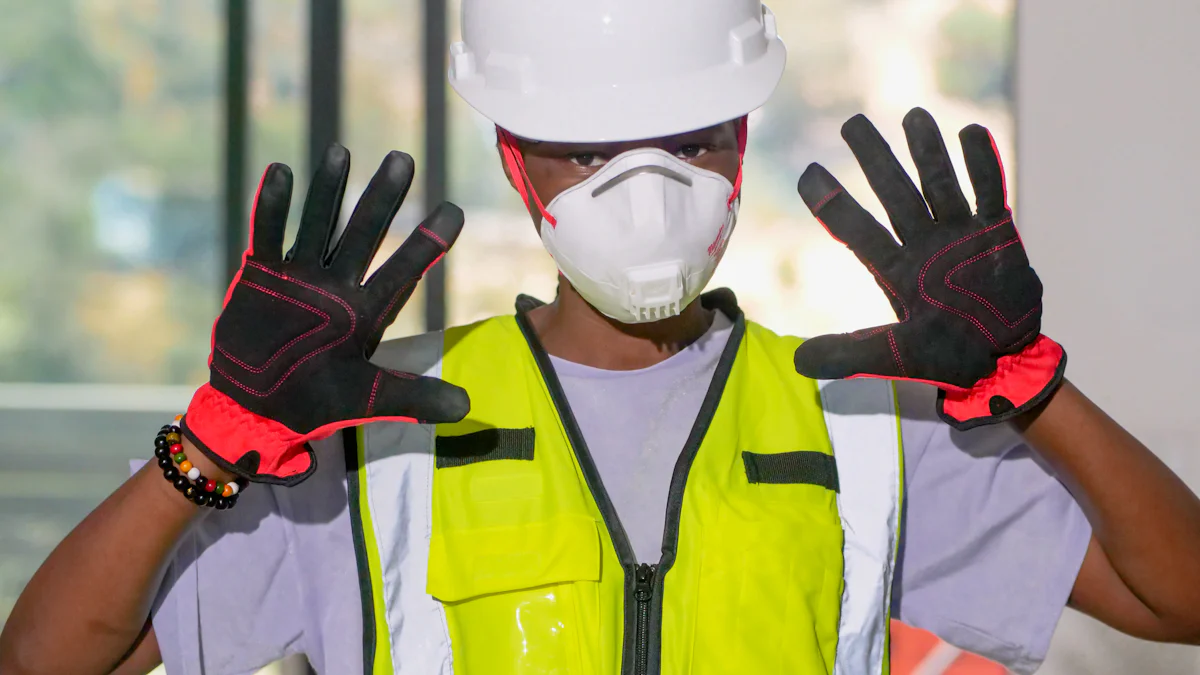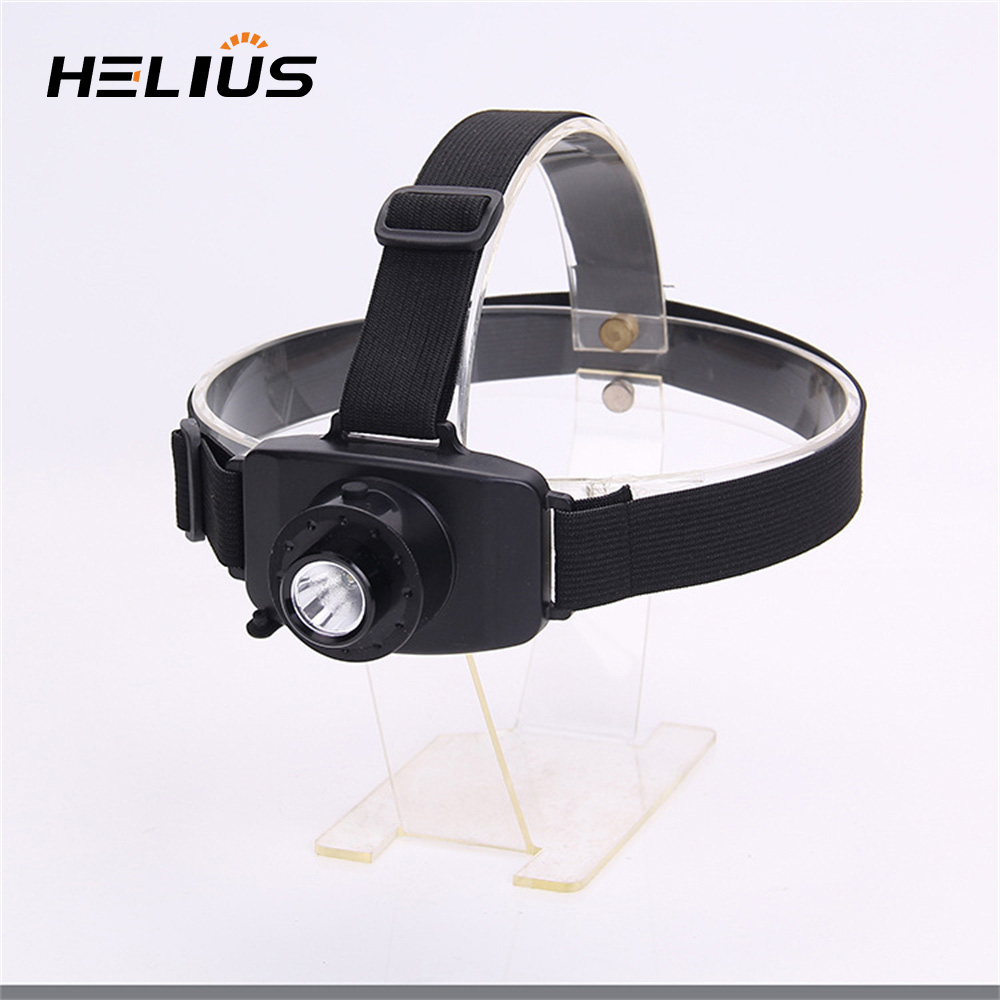Essential Tips for Flashlight and Headlamp Safety in Industrial Work

The role of flashlights and headlamps in industrial safety cannot be overstated. These tools provide essential lighting in environments where visibility is limited, ensuring workers can perform tasks safely and efficiently. Poor workplace lighting increases the risk of injury by making it harder to spot hazards like spills or moving machinery. It also reduces productivity, leading to mistakes and delays. Proper lighting enhances safety by creating a comfortable environment that prevents visual fatigue and improves focus. By adopting flashlight safety practices, you can reduce flashlight-related deaths and protect yourself and your team from harm.
Key Takeaways
Be careful with flashlights to avoid breaking them. Hold them tightly and keep them off wobbly surfaces.
Keep flashlights in a cool, dry spot away from things that can catch fire. Make sure they are easy to find in emergencies.
Check flashlights for any damage before using them. Regular checks help them work well and stay safe.
Turn on lockout mode when storing flashlights. This stops them from turning on by accident and saves battery power.
Pick headlamps that let you change brightness levels. This helps you see better in different places.
General Safety Practices for Workplace Lighting
Proper Handling and Usage
Avoid dropping or mishandling devices.
You should handle flashlights with care to prevent damage. Dropping or mishandling these tools can lead to malfunctions, reducing their effectiveness in critical situations. In hazardous environments, improper handling may even increase safety risks. Always use a firm grip and avoid placing flashlights on unstable surfaces.
Use tools designed for industrial-grade durability.
Select flashlights specifically designed for industrial use. These tools are often impact-resistant, dustproof, and waterproof, ensuring they can withstand tough conditions. For hazardous locations, choose intrinsically safe flashlights that meet strict safety standards. These devices minimize energy output to prevent ignition risks, making them ideal for environments with flammable substances.
Storage Guidelines
Store in a dry, cool place away from flammable materials.
Proper storage is essential for maintaining flashlight safety. Keep your tools in a dry, cool area to prevent moisture damage. Avoid storing them near flammable materials, as this could create a fire hazard. Organized storage also ensures your flashlights remain in good condition and ready for use.
Keep tools easily accessible in case of emergencies.
Emergency flashlight equipment should always be within reach. Store flashlights in designated areas where workers can quickly locate them during power outages or other emergencies. Accessibility can make a significant difference in maintaining workplace safety during critical moments.
Regular Maintenance
Inspect for damage or wear before use.
Before using a flashlight, inspect it for any signs of damage or wear. Cracked lenses, loose components, or corroded battery terminals can compromise performance. Regular inspections help you identify issues early, reducing the risk of equipment failure during use.
Clean lenses and casings to maintain optimal performance.
Dirty lenses can reduce the brightness and clarity of your flashlight. Clean the lenses and casings regularly to ensure optimal lighting performance. Use a soft cloth and avoid abrasive materials that could scratch the surface. Proper maintenance extends the lifespan of your tools and enhances workplace lighting efficiency.
Tip: Regularly test your emergency flashlight equipment to ensure it functions correctly when needed.
Flashlight Safety in Industrial Work

Preventing Accidental Blinding
Avoid shining the beam directly into others' eyes.
Always point your flashlight beam away from others' faces. Direct exposure to a bright beam can cause temporary blindness, increasing the risk of injury in a hazardous environment. When working in teams, stay mindful of where your flashlight is aimed to ensure everyone's safety.
Use diffused light settings when working in groups.
Switch to diffused light settings when collaborating with others. This reduces glare and provides even workplace lighting, making it easier for everyone to focus on their tasks. Many industrial-grade flashlights come with adjustable settings to help you customize the beam for group work.
Using Lockout Modes
Engage lockout mode during storage to prevent accidental activation.
Activate the lockout mode on your flashlight before storing it. This feature prevents the flashlight from turning on accidentally, which is crucial for maximizing flashlight safety in industrial settings. Accidental activation can drain the battery or even cause overheating, compromising the tool's reliability when you need it most.
Familiarize yourself with the lockout feature on your flashlight.
Take time to understand how the lockout mode works on your flashlight. Most industrial flashlights include this feature to enhance safety. Knowing how to use it ensures you can store your flashlight securely and avoid unnecessary risks.
Tip: Lockout modes are especially useful in hazardous environments where accidental activation could lead to dangerous situations.
Managing Heat and Overheating
Avoid prolonged use at high brightness levels.
Using your flashlight at maximum brightness for extended periods can generate excessive heat. This not only affects the flashlight's performance but also poses a safety risk. Switch to lower brightness settings when possible to maintain optimal lighting without overheating.
Allow the flashlight to cool down if it becomes too hot.
If your flashlight feels hot to the touch, turn it off and let it cool down. Overheating can damage internal components and reduce the tool's lifespan. Regular breaks during use help keep your flashlight in good condition and ensure workplace safety.
Note: Heat management is essential for maintaining flashlight safety and preventing equipment failure during critical tasks.
Headlamp Safety for Hands-Free Workplace Lighting

Ensuring a Secure Fit
Adjust straps to prevent slipping or discomfort.
A secure fit is essential for effective hands-free use of headlamps. Adjust the straps to ensure they sit snugly on your head without causing discomfort. Loose straps can cause the headlamp to slip, disrupting your focus and reducing workplace efficiency. Regularly check the fit to maintain stability during tasks.
Use helmets or hard hats with headlamp mounts for added stability.
For industrial environments, pair your headlamp with helmets or hard hats equipped with mounting systems. These mounts provide extra stability, ensuring the headlamp stays in place even during rigorous activities. This setup also enhances safety by keeping your hands free for critical tasks.
Avoiding Distractions
Keep the beam focused on the task at hand.
When using headlamps, direct the beam toward your work area. A focused beam ensures you can see clearly without unnecessary distractions. Avoid shining the light in unintended directions, as this can disrupt your concentration and affect the quality of your work.
Avoid unnecessary adjustments while working.
Minimize adjustments to your headlamp during tasks. Frequent changes to the beam angle or brightness can interrupt your workflow and reduce productivity. Set the headlamp to the appropriate settings before starting your work to maintain consistent hands-free lighting.
Maintaining Visibility
Use headlamps with adjustable brightness for different environments.
Industrial settings often require varying levels of illumination. Choose headlamps with adjustable brightness modes to adapt to different tasks. High beams are ideal for long-distance visibility, while softer beams work well for close-up tasks. This flexibility ensures reliable hands-free lighting in any situation.
Ensure the beam angle is appropriate for the task.
The beam angle plays a crucial role in maintaining visibility. Adjust the angle to illuminate your work area without creating glare or shadows. A properly angled beam enhances safety and allows you to complete tasks efficiently.
Tip: Invest in a rugged and reliable headlamp designed for industrial use. Look for features like long battery life, shockproof construction, and waterproofing to ensure durability in challenging conditions.
Battery Safety for Flashlights and Headlamps
Proper Storage
Store batteries in a cool, dry place away from direct sunlight.
You should always store batteries in a location that is cool and dry. Excessive heat or direct sunlight can cause batteries to degrade or even leak, which may damage your flashlight. A controlled environment helps maintain battery performance and ensures your flashlight is ready when you need it. Avoid storing batteries in areas prone to moisture, as this can lead to corrosion.
Keep batteries in their original packaging or a designated container.
Loose batteries can create safety risks, especially if their terminals come into contact with metal objects. Keep batteries in their original packaging or use a designated container to prevent accidental short circuits. Organized storage also makes it easier to locate batteries when you need them for your flashlights or other intrinsically safe products.
Safe Usage Practices
Use only compatible batteries for your flashlight or headlamp.
Always check the manufacturer’s recommendations before inserting batteries into your flashlight. Using incompatible batteries can lead to malfunctions or even damage the device. Industrial-grade flashlights often require specific battery types to ensure optimal performance and safety.
Avoid mixing old and new batteries in the same device.
Using a mix of old and new batteries can cause uneven power distribution, which may reduce the lifespan of your flashlight. Replace all batteries at the same time to maintain consistent performance. This practice also minimizes the risk of leakage, which can harm both the flashlight and the user.
Disposal and Recycling
Dispose of batteries according to local regulations.
Improper disposal of batteries can harm the environment and pose safety hazards. Follow your local regulations for battery disposal to ensure you handle them responsibly. Many communities offer designated drop-off points for used batteries, making it easy to dispose of them safely.
Recycle rechargeable batteries to reduce environmental impact.
Rechargeable batteries are a sustainable choice for workplace lighting. When they reach the end of their life, recycle them through approved programs to minimize waste. Recycling helps recover valuable materials and reduces the environmental footprint of your flashlight usage.
Tip: Regularly inspect your batteries for signs of damage, such as leaks or corrosion. Replace damaged batteries immediately to maintain flashlight safety and prevent hazardous situations.
Flashlights and headlamps play a vital role in maintaining safety in industrial environments. They provide essential lighting in low-visibility areas, helping you perform tasks accurately and avoid hazards. Proper flashlight safety practices, such as using durable tools and intrinsically safe lighting, reduce risks in hazardous conditions. Regular maintenance, secure storage, and correct handling ensure your tools remain reliable.
Headlamps enhance safety by offering hands-free lighting, reducing the risk of trips and falls. Adjustable brightness settings improve focus and task execution. In emergencies, they provide immediate illumination, enabling quicker responses. By prioritizing flashlight safety, you create a safer and more efficient workplace for everyone.
Tip: Always choose flashlights and headlamps with long-lasting batteries and water-resistant designs for maximum durability and performance.
FAQ
What makes industrial-grade flashlights different from regular ones?
Industrial-grade flashlights are built for durability. They resist impact, water, and dust, making them reliable in tough environments. Many also meet safety standards for hazardous locations, ensuring they can operate safely around flammable materials.
How often should you inspect your flashlight or headlamp?
Inspect your flashlight or headlamp before every use. Check for cracks, loose parts, or battery corrosion. Regular inspections help you identify issues early, ensuring your tools work reliably when needed.
Can you use rechargeable batteries in all flashlights?
Not all flashlights support rechargeable batteries. Always check the manufacturer’s guidelines to confirm compatibility. Using the wrong type of battery can damage the device or reduce its performance.
Why is lockout mode important for flashlight safety?
Lockout mode prevents accidental activation during storage. This feature conserves battery life and reduces overheating risks. It’s especially useful in hazardous environments where accidental activation could create safety hazards.
How do you clean a flashlight or headlamp properly?
Use a soft cloth to clean the lens and casing. Avoid abrasive materials that might scratch the surface. For stubborn dirt, use a damp cloth and mild soap. Regular cleaning ensures optimal lighting performance.
See Also
Essential Guidelines for Selecting Your Ideal Flashlight
Five Key Considerations for Wholesale Headlamp Selection
Best Practices for Finding a Reliable Headlamp Supplier
